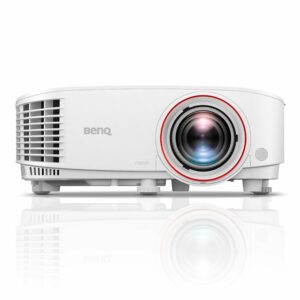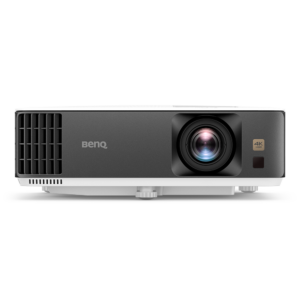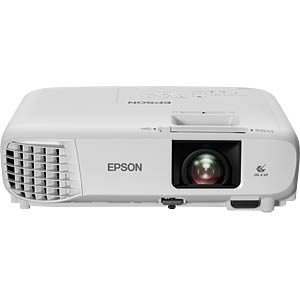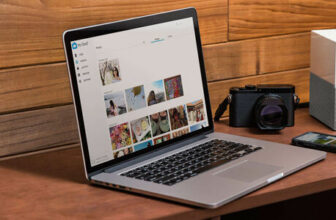
Best projectors in Kenya, review, specs and prices
- Show all
- Popular this Month
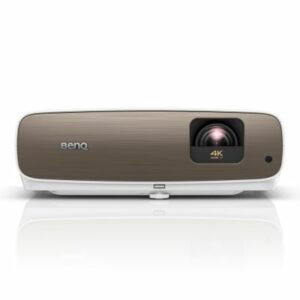
BENQ W2700I – 4K HDR Projector 2000 Lumens price, review and specs in Kenya
Sold by Citation Systems| Designation | Aspect ratio / format | Resolution |
| SVGA | 4:3 | 800×600 |
| XGA | 4:3 | 1024×768 |
| 2K | 4:3 | 2048×1536 |
| FWVGA | 16:9 | 854×480 |
| HD (HD Ready) | 16:9 | 1280×720 |
| Full HD | 16:9 | 1920×1080 |
| 4K | 16:9 | 3840×2160 |
| 8K | 16:9 | 7680×4320 |
| WXGA | 16:10 | 1280×800 |
| WUXGA | 16:10 | 1920×1200 |
Overview
Discover the variety of our projectors and secure the best brand quality at the best prices right here in Nairobi, Kenya. Whether for events or in the office – there is something for everyone here. Let yourself be inspired by the top models from Brother, Canon, Epson etc.
What is a projector?
A projector is used for the enlarged visual representation of texts, images and video material. In the private environment, these are particularly popular for sporting events as well as for slide shows of private pictures and for home cinema. But projectors have also become indispensable in the business sector – presentations, evaluations or analyses: projectors are part of our everyday life and significantly simplify working life.
Projectors are developed for a wide variety of uses and therefore exist in many different price categories. But what really matters? You can find out which criteria you need to take into account in particular in our guide here.
How a projector works
Regardless of the technology used, projectors always require a light source, an image source and image processing. The light source is responsible for the quality of the image. The stronger the light intensity here, the less the room in which the projection takes place needs to be darkened. However, the processing of the image and the image source vary depending on the type of projector. The technologies commonly used on the market are LCD, DLP, LED and laser technology. Which one is best depends entirely on your personal use case. Below we will explain the different types in more detail.
The LCD projector
The abbreviation LCD stands for Liquid Crystal Display – With this technology, the white light from the lamp is divided into red, yellow and blue and is sent to the projection surface through three LCD displays. Above all, the high color intensity and the pixel separation are particularly effective with LCD projectors. This ensures very good readability of texts. However, since the colors are a product of the mixture of the primary colors, there are minimal compromises in the black levels
The LED projector
LED projectors have three basic colors: red, yellow and blue – which are sent to a central chip. The difference to the LCD projector and DLP projector lies in the light source. No mercury lamps are used here, but light-emitting diodes. The advantages are the very long service life, the energy-efficient operation and the low heat and noise emissions.
The DLP projector
DLP technology (Digital Light Processing) is frequently used in high-resolution projectors. Here the projector projects millions of small mirrors onto the surface, which cover all color levels through undetectable tilting movements. This means that the DLP projector achieves natural color representation as well as very high image quality with excellent black colors. The DLP technology also benefits from a very high projection speed.
The laser projector
Here the laser is used as a direct light source to project texts, graphics or videos onto a surface. The Laser projector are known for their very detailed representation of content, as they shine more persistently and brighter than light-emitting diodes. The average lifespan is up to 20,000 hours. This means you won’t need any additional spare parts, which can save costs.
Projector – What do you have to consider before buying?
The most important key figures for projectors are brightness, contrast, resolution, the possible interfaces, as well as size, volume and the image display technology used. These properties determine whether the projector is suitable for a home cinema system or as an Entry level projector Suitable for home use, whether it can be used outdoors at the next World Cup or whether it can be used as a mobile projector, in everyday office life or in training courses, and delivers the performance you need.
The resolution determines how many pixels (image points) an image is made up of. The higher the resolution, the more detailed the image can be displayed. Full HD projector for example, with a resolution of 1920×1080, have a corresponding aspect ratio of 16:9, which applies to 4K projector (Resolution 3840×2160, aspect ratio 16:9) and HD projector (1280×720 / 16:9) as well.
Projectors with aspect ratios of 4:3 and 16:10 are very suitable for the business sector because, in contrast to 16:9, they offer more vertical space. In principle you can say that the higher the resolution, the more detailed the image displayed. High resolution is particularly convenient for home cinema systems or gaming.
The brightness or light intensity of the projector
On the one hand, the required light intensity depends on the distance to the projection surface and the desired image size. Another crucial factor is the brightness of the environment
- In rooms without windows, projectors with light levels of less than 2000 ANSI lumens are sufficient.
- In a well-darkened room, 2000 to 3000 ANSI lumens are completely sufficient.
- In a room that is not darkened, 3000 to 4000 ANSI lumens are recommended.
- In large and very bright rooms, projectors with over 4000 ANSI lumens are sufficient
- From 6000 ANSI lumens, projectors deliver good images even in broad daylight, outside in the open air.
What contrast values does my future projector need?
From 3,000:1 you can speak of a good contrast value; such projectors are at least suitable for presentations and lectures. Projectors with a contrast value from 10,000:1 are sufficient for watching films and playing computer games.
Connection options and connections of a projector
Modern projectors can offer a variety of connection options. These interfaces enable image transmission via VGA cable, DVI cable and the simultaneous transmission of image and sound cable, DisplayPort and RCA Cable.
- VGA : Analogue connection for transmitting image signals
- Cinch : Analogue connection for transmitting image and sound signals
- DVI : Digital connection for transferring image data (suitable for high-resolution images)
- HDMI : Digital connection for transmitting digital image and sound data (suitable for high-resolution images)
- DisplayPort : Digital connection for transmitting digital image and sound data (suitable for high-resolution images)
For business projectors, analog connections such as VGA and Cinch are sufficient, as high-resolution images are not required here. If you want to view images and videos in very high quality, you should choose digital connections for image transmission such as DVI, HDMI or DisplayPort. Other types of connection include data interfaces such as WLAN, Bluetooth, USB, RJ45 and WireDisplay.
The largest manufacturers are Acer, Epson, BenQ, Optoma and NEC, but smaller manufacturers can also deliver very good results with their devices.


